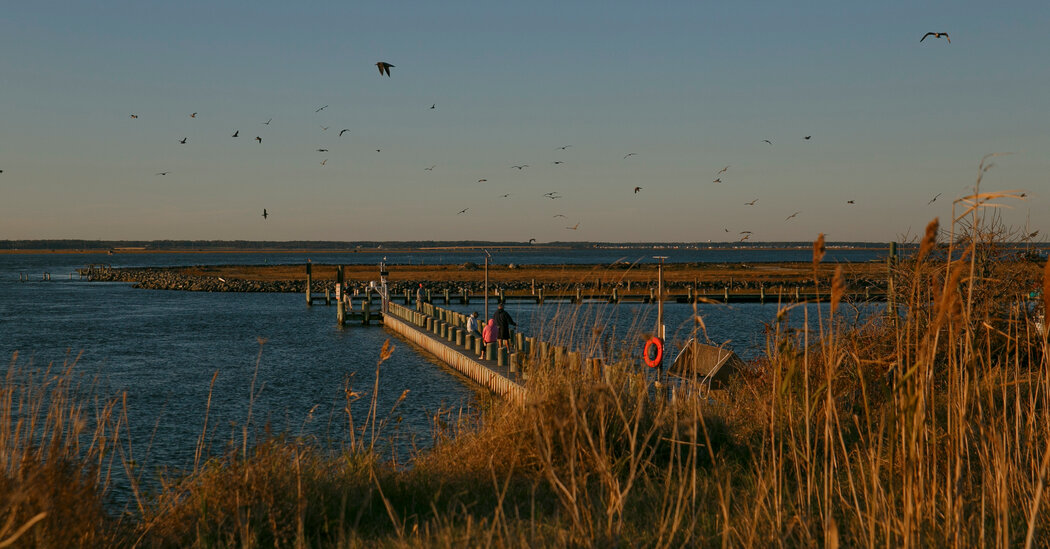
Historically, African-American neighborhoods were tucked away from the waterfront, so if you want to look for traces of the Downings’ life on Chincoteague, you might go farther inland to higher ground where the Union Baptist and Christ United Methodist churches are. A local podcast series called The Bivalve Trail further describes Thomas Downing’s story on Chincoteague, following his journey all the way to New York.
Years after Downing learned to tong oysters on Virginia’s Eastern Shore, the wider Chesapeake region became one of the largest producers of oysters in North America. That changed in the 1970s and ’80s when the annual harvest sharply declined from the more than 25 million pounds that Virginia and Maryland had been producing just a decade or so before. A combination of overharvesting as well as a surge of waterborne disease led to the depletion of the region’s oyster reefs, which, despite ongoing efforts to revitalize them, are still far from their peak. Both Maryland and Virginia, once titans of wild oyster production, now turn out less than 250,000 pounds a year.
So it’s not surprising that the region has pivoted to aquaculture. Oyster farmers have largely replaced oyster tongers, and while raising oysters doesn’t replace the wonder that comes with unearthing shells from a wild reef, the practice allows farmers to protect oyster seed from predators, disease and even the simple threat of soft mud, which, given the absence of a hardened reef, could bury and suffocate an oyster.
In New York, a storied 19th-century oyster cellar
When Downing moved to New York City in 1819, he quickly became acquainted with the Hudson River, where he fixated on finding the best of the best on the New Jersey side of the river. Downing knew that oysters were sought after in New York, and he made friends fast and patrons faster. Eventually he opened his own cellar, Downing’s Oyster House, on Broad Street in 1825, where he’d serve Charles Dickens and a whole world of white elites. Even Queen Victoria ate oysters sent to her by Downing.
The culture surrounding oysters started changing during the 19th century. There were the blue-collar oystermen that Downing left behind on Virginia’s Eastern Shore, but New York City had its own oystermen who would transform their homes into dining cellars for those wanting a no-frills meal fresh from the sea.
When Downing arrived in New York, oyster cellars — many of them Black-operated and supplied by Black oystermen — were already popular, but they were not considered respectable places for serious dining. Downing believed that he could distinguish himself by appealing to the businessmen in the Financial District. With savings from years of working as an oysterman in Philadelphia and New York, he decorated his restaurant with damask curtains, a chandelier and fine carpeting. In the evening, businessmen would even bring their wives to Downing’s, which was significant since oyster houses typically weren’t thought of as “proper.”
His restaurant flourished. The new dining haven signaled a shift in the way people perceived oysters, both as a food and social experience. It’s this complexity in the cultural interpretation of oysters and the way they’ve been represented over time that fascinates me.



